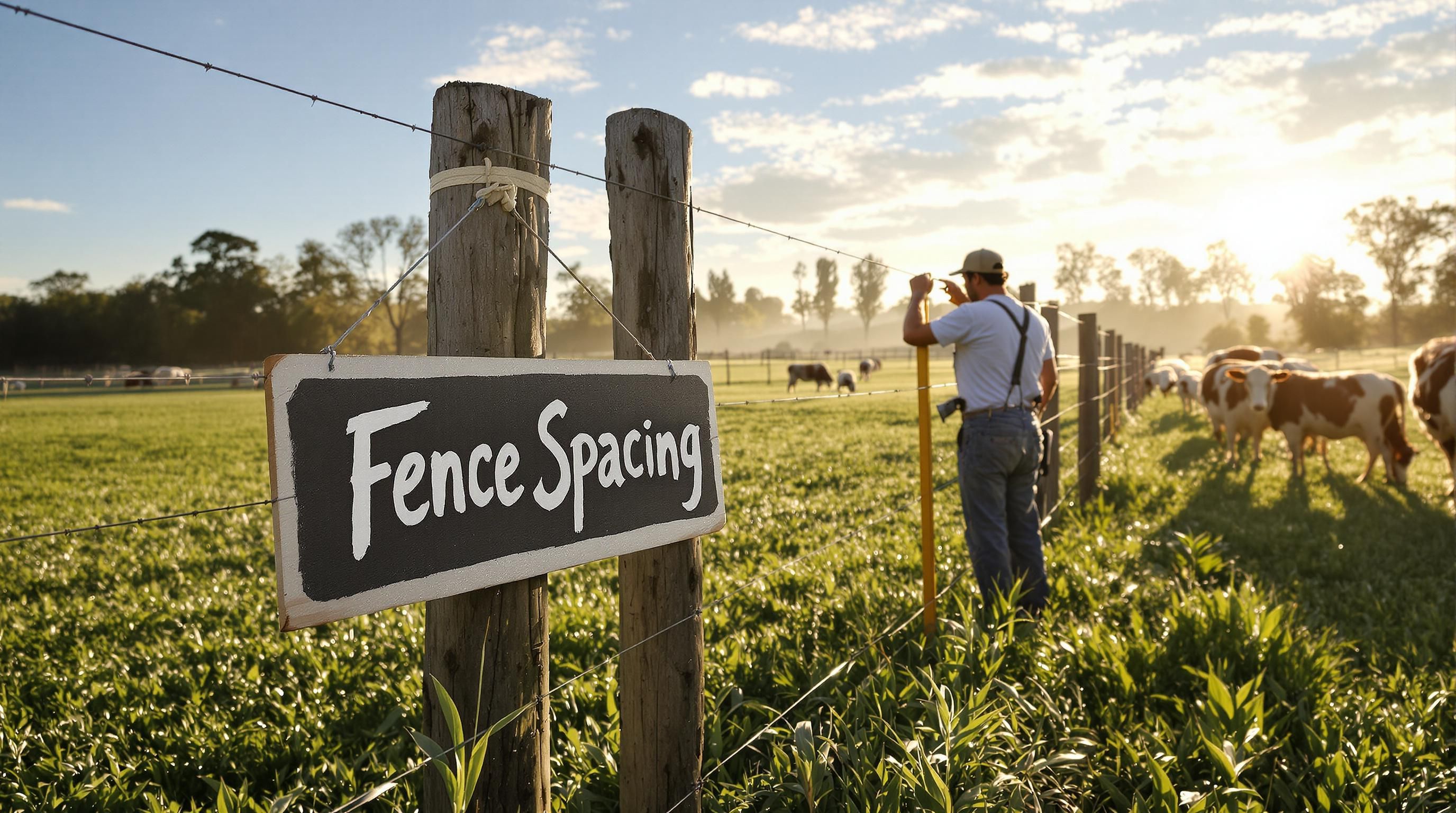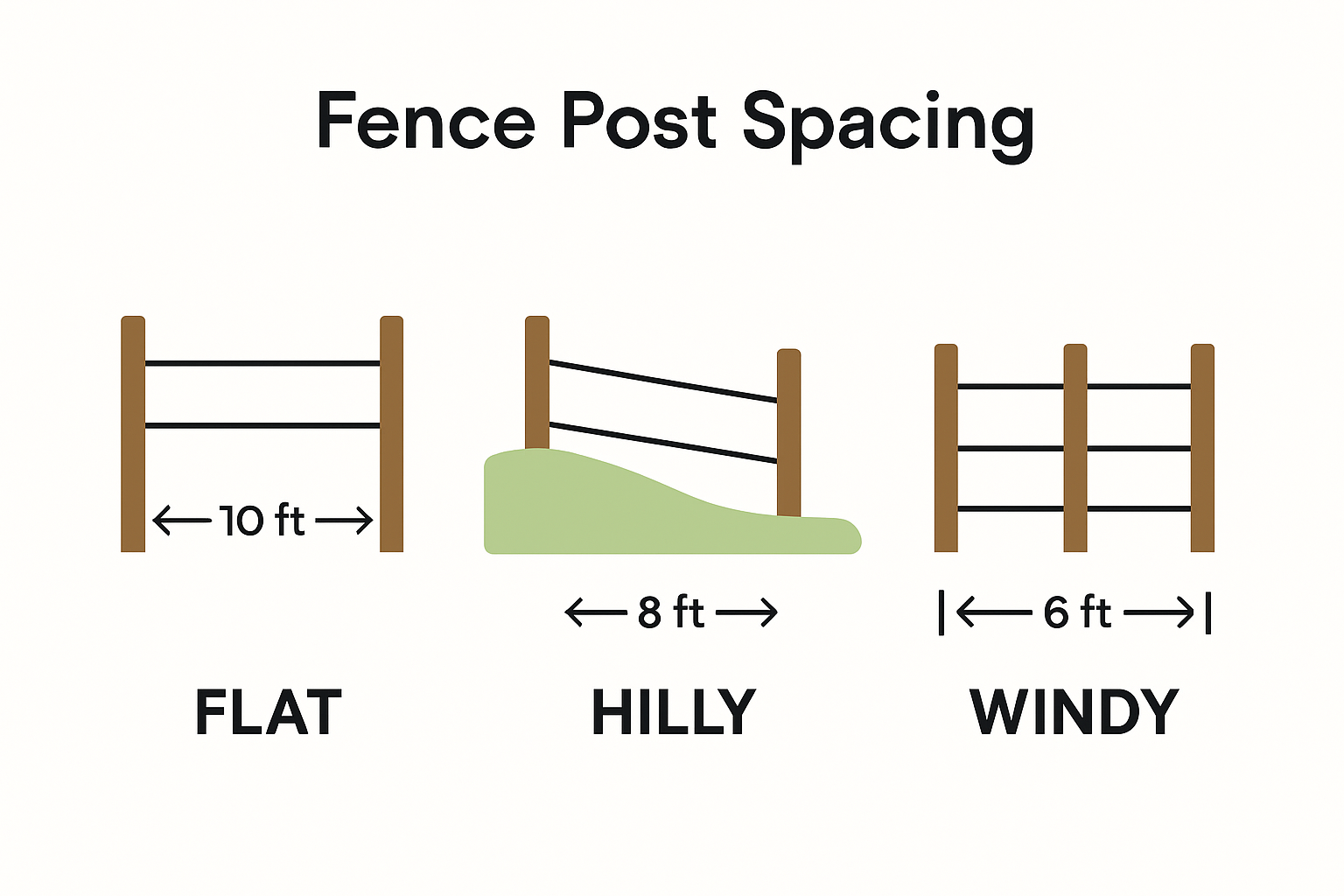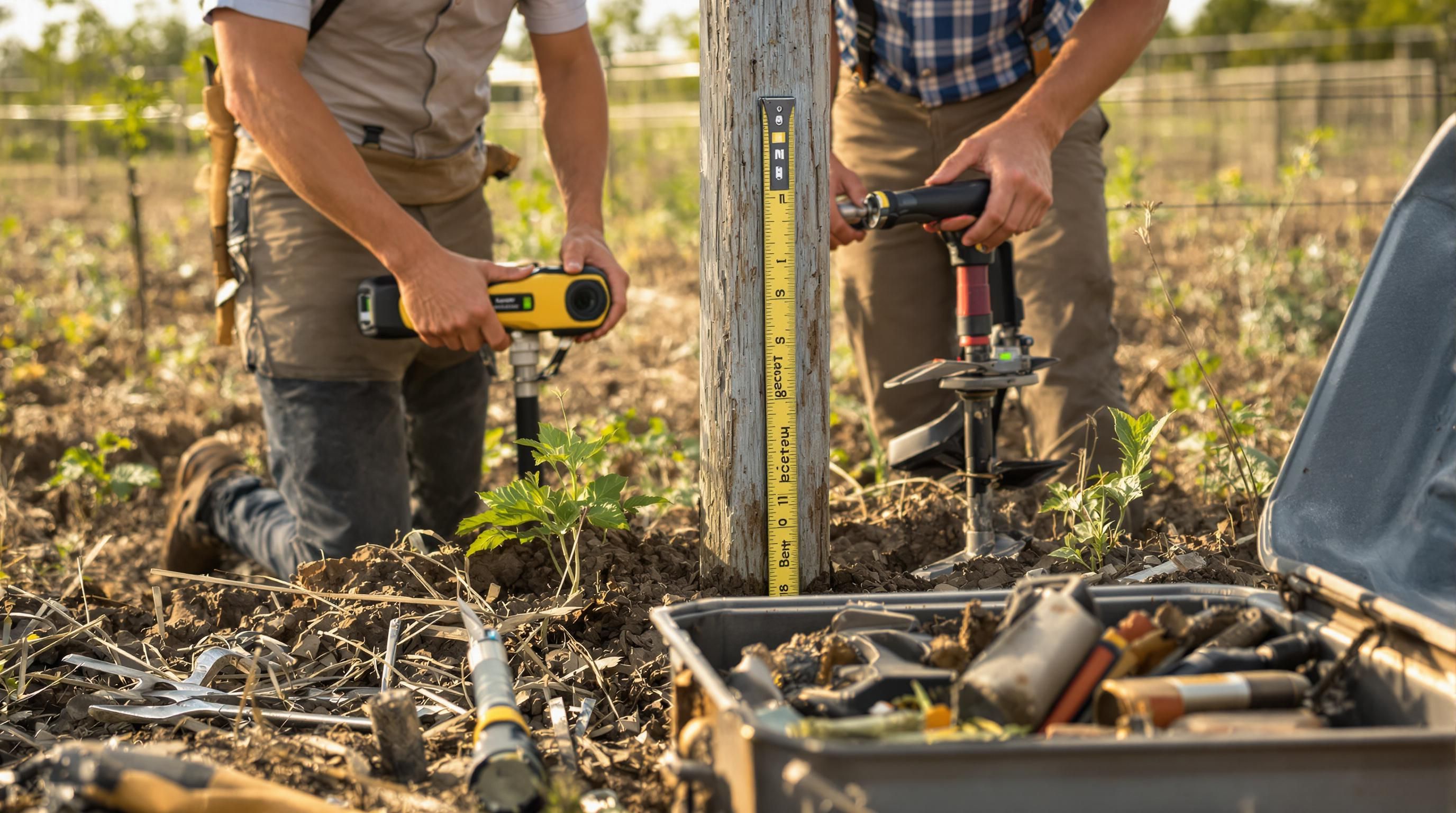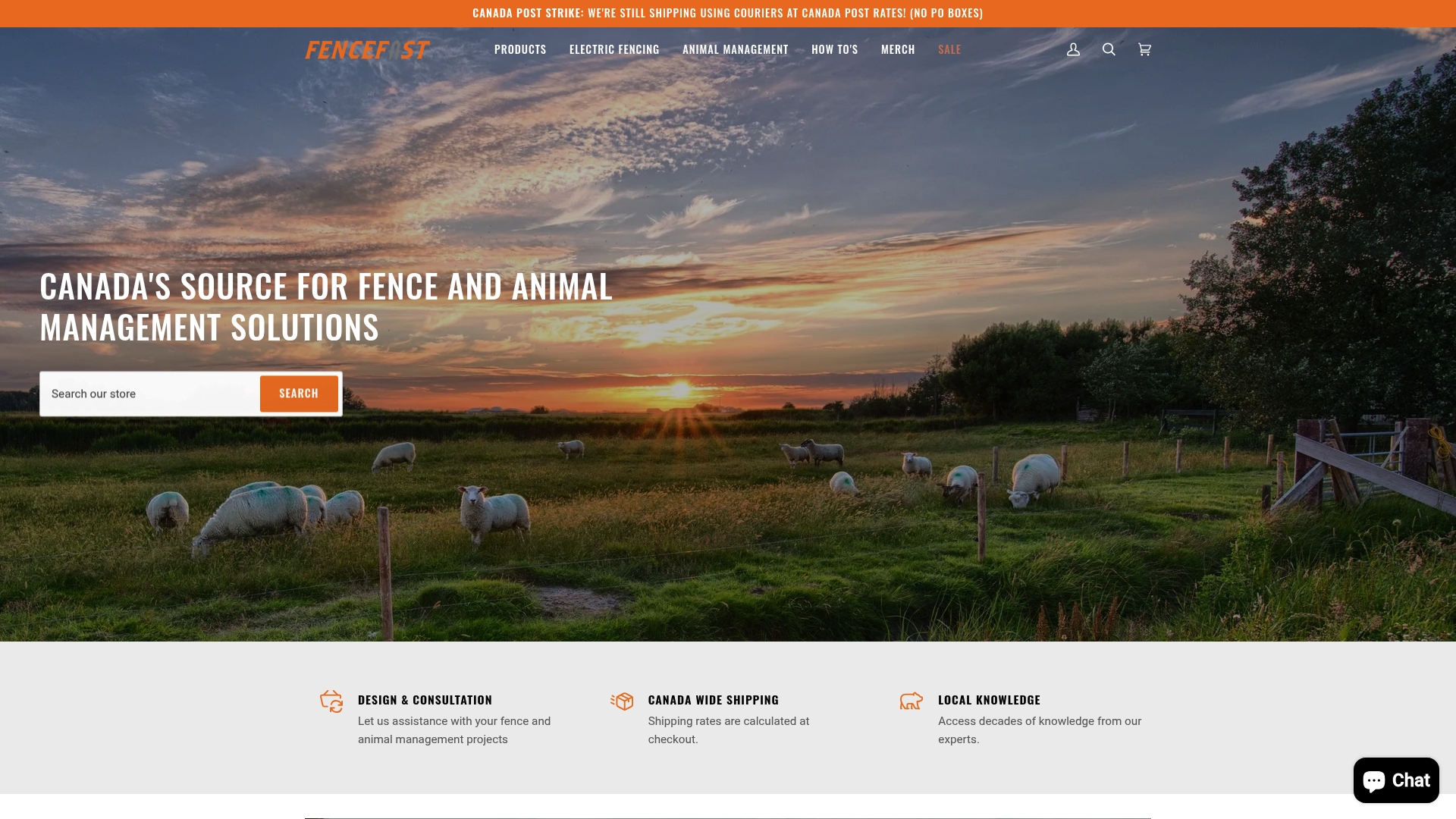
Setting the right distance between fence posts can make or break any farm’s boundaries and livestock safety. Most people guess or copy a neighbor’s layout and end up with wobbly fences and rising repair bills. But get this. Strategic spacing can cut post costs by up to 30 percent while doubling overall fence stability. The real surprise is how a few feet in either direction can mean the difference between a fence that lasts decades or one that needs replacing after a single season.
Table of Contents
- Choosing The Right Fence Post Spacing
- Fence Post Spacing By Fence Type
- Tools And Tips For Accurate Post Placement
- Common Mistakes And How To Avoid Them
Quick Summary
| Takeaway | Explanation |
|---|---|
| Choose post spacing based on terrain | Adjust post spacing from 8-12 feet on hilly ground to 16-20 feet on flat terrain for structural stability. |
| Consider livestock needs for spacing | Different animals require varying post densities; cattle often need posts every 10-12 feet, while goats may need less frequent spacing. |
| Invest in quality tools for installation | Using the right tools like a level and post hole digger can enhance installation precision and durability of the fence. |
| Avoid common installation mistakes | Ensure corner posts are deep enough and adequately braced to prevent structural failure in fences. |
| Plan for future adjustments and maintenance | Regularly inspect materials and adapt post placement strategies according to soil conditions and livestock needs to ensure long-term fence integrity. |
Choosing the Right Fence Post Spacing
Fence post spacing is a critical decision that impacts the overall effectiveness, durability, and cost of your fencing project. The right spacing ensures your fence provides maximum security, support, and longevity for your agricultural or livestock needs.
Factors Influencing Post Spacing Decisions
Multiple variables determine the optimal fence post spacing for your specific situation. The Natural Resources Conservation Service recommends carefully evaluating terrain, livestock type, and fence purpose before establishing your post layout.
Terrain plays a significant role in determining post spacing. Uneven or hilly ground requires closer post placement to maintain fence tension and prevent sagging. Flat terrain allows for wider spacing, potentially reducing material costs and installation time. Typical spacing ranges include:
- Flat Terrain: 16-20 feet between posts
- Rolling or Hilly Ground: 8-12 feet between posts
- Areas with High Wind Exposure: Closer spacing recommended

Livestock and Fence Type Considerations
Agricultural Extension Services highlight that different livestock types demand specific post spacing strategies. Cattle require more robust fencing with closer post intervals compared to sheep or goats. For standard barbed wire fencing with cattle, most professionals recommend:
- Corners and gates: Posts every 10-12 feet
- Standard fence lines: Posts every 16-20 feet
- High-tension wire systems: Potentially wider spacing up to 25-30 feet
The type of wire or fencing material also influences post spacing. Electric fencing might allow slightly wider intervals, while woven wire fencing typically requires more frequent post placement to maintain structural integrity.
Cost and Efficiency Calculations
Post spacing directly impacts both material expenses and long-term fence performance. While closer spacing provides more stability, it increases material and labor costs. Farmers must balance initial investment with long-term durability. A strategic approach involves:
- Calculating total posts needed based on property dimensions
- Considering terrain challenges
- Evaluating livestock containment requirements
- Factoring in potential future land use changes
Professional fencing contractors recommend conducting a comprehensive site assessment before finalizing your post spacing strategy. Each property presents unique challenges that require customized solutions beyond standard recommendations.
Remember that proper post spacing is not just about distance between supports. It involves understanding ground conditions, anticipated stress points, and the specific containment needs of your agricultural operation. A well-planned fence post layout ensures you maximize both functionality and cost-effectiveness.
Fence Post Spacing by Fence Type
Fence post spacing varies significantly depending on the type of fencing material and its intended purpose. Understanding these variations helps farmers and ranchers design more effective and efficient fencing solutions for their specific agricultural needs.
Wooden Fence Post Configurations
The University of Maine Cooperative Extension provides critical insights into wooden fence post spacing. For wooden line posts over 3.5 inches in diameter, professionals recommend spacing between 12 to 20 feet apart. Smaller diameter wooden posts require closer placement, typically 12 to 15 feet apart.
Wooden posts offer robust support and traditional aesthetic appeal. The spacing strategy depends on several key factors:
- Terrain Complexity: Hilly or uneven ground demands closer post placement
- Livestock Type: Heavier animals require more frequent support
- Intended Fence Purpose: Perimeter fencing needs different spacing compared to internal pasture divisions
Wire Fencing Spacing Strategies
Wikipedia research on barbed wire fencing reveals nuanced spacing approaches across different terrains. In challenging hilly landscapes, steel posts might be placed every 10 feet to ensure stability. Conversely, flat terrain allows for more expansive spacing, potentially extending up to 30 to 50 feet between posts.
Barbed wire configurations typically follow these general guidelines:
- Short fences in rough terrain: Posts every 10 feet
- Long spans in flat areas: Posts up to 50 feet apart
- Standard wooden post placement: Approximately 33 feet with 4-5 intermediate battens
Electric and High-Tension Fencing Considerations
Electric and high-tension fencing systems introduce unique post spacing dynamics. These modern fencing solutions prioritize tension maintenance and electrical conductivity. Unlike traditional fencing, they can often accommodate wider post intervals while maintaining structural integrity.
Key considerations for electric and high-tension fencing include:
- Utilizing stronger corner and end posts for tension support
- Implementing specialized wire tensioning mechanisms
- Selecting posts made from materials with high electrical conductivity
Professional fencing contractors emphasize that post spacing is not a one-size-fits-all solution. Each agricultural operation requires a customized approach that considers local environmental conditions, livestock requirements, and long-term land management goals.
Careful planning and strategic post placement ensure your fence provides maximum security, durability, and cost-effectiveness. By understanding the nuanced spacing requirements for different fence types, farmers can create robust boundary solutions tailored to their specific agricultural needs.
Here is a table summarizing recommended post spacing for different fence types and terrain conditions mentioned above:
| Fence Type | Terrain/Condition | Post Spacing (Feet) |
|---|---|---|
| Wooden (over 3.5" diameter) | General | 12-20 |
| Wooden (smaller diameter) | General | 12-15 |
| Steel (barbed, rough terrain) | Hilly/Uneven | 10 |
| Steel (barbed, flat terrain) | Flat | 30-50 |
| Standard wooden post (battens) | Flat | 33 |
| High-tension wire system | General | 25-30 |
| Corners and gates (cattle) | General | 10-12 |
| Standard wire fence line (cattle) | General | 16-20 |
This table provides a quick reference to optimal post spacing choices by fence type and terrain.
Tools and Tips for Accurate Post Placement

Accurate fence post placement is fundamental to creating a durable and effective agricultural boundary. Proper installation requires precision, specialized tools, and a strategic approach to ensure long-lasting fence performance.
Essential Tools for Post Installation
Mississippi State University Extension Service recommends several critical tools for precise post placement. Essential equipment includes:
- Post hole digger: Manual or mechanical options for creating consistent depth holes
- Level: Ensures posts remain perfectly vertical during installation
- Measuring tape: Critical for maintaining consistent spacing
- String line: Helps maintain straight fence lines across varied terrain
- Tamping bar: Compacts soil around posts for maximum stability
Professional farmers understand that investing in quality tools significantly impacts fence durability and performance. Precision during installation prevents future alignment issues and reduces long-term maintenance requirements.
To help you check off all necessary equipment for a successful fence installation, here’s a checklist table of essential tools mentioned above:
| Tool | Purpose/Use | Ready? |
|---|---|---|
| Post hole digger | Creating consistent depth holes | |
| Level | Ensuring vertical placement of posts | |
| Measuring tape | Maintaining consistent spacing | |
| String line | Keeping fence lines straight | |
| Tamping bar | Compacting soil around posts for stability |
Before starting, make sure each tool is available and ready to use.
Strategic Post Depth and Placement Techniques
AGDAILY’s guide to farm fencing emphasizes the importance of strategic post placement. The depth of post installation varies depending on soil composition and terrain. In medium to heavy clay soils, posts should be set at a depth equal to 10 times their diameter. Sandy soils require even deeper placement, typically 15 times the post diameter.
Key placement strategies include:
- Installing posts at the top and bottom of landscape dips
- Following the land’s natural contour
- Ensuring consistent spacing (typically 8-12 feet apart)
- Creating additional support at corners and gate areas
A square 40-acre pasture requires approximately one mile of fencing. Spacing posts 8 feet apart would necessitate 660 posts, while 12-foot spacing reduces this to 440 posts. This demonstrates how strategic spacing impacts both material costs and labor investment.
Advanced Placement Considerations
Beyond basic tools and techniques, successful post placement involves understanding complex environmental factors. Soil type, ground moisture, and local climate conditions all play crucial roles in determining optimal installation methods.
Professional recommendations include:
- Conducting soil tests before installation
- Selecting posts treated for underground moisture resistance
- Using gravel or concrete for enhanced post stability
- Allowing proper curing time for concrete-set posts
- Implementing drainage solutions for areas with high moisture content
Accurate post placement is more than a technical task. It represents a critical investment in your agricultural infrastructure. Each carefully placed post contributes to a fence’s overall strength, longevity, and effectiveness in managing livestock and defining property boundaries.
Farmers who approach post placement with meticulous attention to detail create fencing solutions that withstand years of environmental challenges and provide reliable containment for their agricultural operations.
Common Mistakes and How to Avoid Them
Fence installation requires precision and strategic planning. Understanding common mistakes can help farmers and ranchers create more reliable and durable fencing solutions that effectively protect their livestock and property.
Corner Post and Structural Failures
The Ohio State University Extension identifies undersized or shallow corner posts as a primary cause of fence structural failure. Corner posts are critical structural elements that bear significant tension and support the entire fence line.
Key mistakes to avoid in corner post installation include:
- Insufficient Depth: Corner posts should be set at a depth equal to or greater than the height of the top wire
- Weak Materials: Using low-quality or untreated posts susceptible to rot
- Inadequate Bracing: Neglecting proper diagonal or H-bracing techniques
- Poor Soil Preparation: Not accounting for soil type and drainage conditions
Professional farmers understand that investing time in robust corner post installation prevents costly future repairs and maintains fence integrity across challenging terrain.
Electric Fencing Configuration Errors
Research from Ohio State University Extension reveals critical insights into electric fencing installation. Electric fence systems require specific spacing and power management strategies to ensure effective livestock containment.
Common electric fencing mistakes include:
- Improper post spacing (recommended 80-100 feet apart)
- Inadequate wire tension
- Insufficient energizer output
- Neglecting to insert stays between posts to maintain wire position
The recommended energizer configuration is 1 joule of output per mile of fence, regardless of wire strand count. This ensures consistent power distribution and reliable livestock containment.
Material Selection and Maintenance Pitfalls
Choosing appropriate materials and maintaining fence infrastructure are crucial for long-term performance. Farmers frequently encounter challenges related to material degradation, inappropriate wire selection, and inadequate maintenance protocols.
Critical considerations for avoiding material-related mistakes:
- Selecting wire appropriate for specific livestock types
- Using corrosion-resistant fasteners and connectors
- Implementing regular inspection and maintenance schedules
- Accounting for environmental factors like moisture and temperature variations
- Budgeting for periodic fence rehabilitation
Successful fence management requires a proactive approach. By understanding potential pitfalls and implementing strategic installation and maintenance techniques, farmers can create resilient boundary systems that protect their agricultural investments.
Remember that fence installation is not just a technical task but a critical investment in your agricultural infrastructure. Careful planning, quality materials, and attention to detail separate exceptional fencing solutions from mediocre installations.
Frequently Asked Questions
What is the ideal fence post spacing for different terrains?
The ideal fence post spacing typically ranges from 16-20 feet on flat terrain and 8-12 feet on hilly ground. Areas with high wind exposure may require closer spacing for added stability.
How often should fence posts be placed for different types of livestock?
For cattle, it’s recommended to place posts every 10-12 feet for corners and gates, and every 16-20 feet for standard fence lines. Goats and sheep may require less frequent spacing.
What tools are essential for proper fence post installation?
Key tools for fence post installation include a post hole digger, level, measuring tape, string line, and tamping bar. Using quality tools ensures precise placement and long-lasting fences.
What are common mistakes to avoid when installing fence posts?
Common mistakes include insufficient depth for corner posts, inadequate bracing, and poor material selection. Ensuring proper depths, bracing techniques, and using suitable materials can prevent structural failures.
Ready to Build a Fence That Lasts? Choose Proven Supplies and Support
After reading about how the right fence post spacing can save money and reduce future repairs, you may realize how costly guessing can be. Uneven ground, tough Canadian weather, or choosing the wrong materials can turn even the most carefully planned fence into a maintenance headache. Stability, livestock safety, and cost-efficiency depend on using not just the right spacing, but also the right equipment—every piece from wire to staplers counts.

Take the stress out of your next fencing job. Visit FenceFast.ca to shop trusted fencing components, electric fence systems, and livestock tools designed for Canadian farms and ranches. Unsure of what you need for your terrain or animals? Explore our expert advice and easy ordering system to match the post spacing guidance from the article with the exact supplies required for long-lasting results. Let FenceFast.ca help you complete your project right the first time. Order today to start building your most reliable fence yet.
Recommended
-
[
Gallagher Earth Ground Stake KIWITAH – FenceFast Ltd.
](https://fencefast.ca/products/gallagher-kiwitah-ground-stake)
-
[
Corral Euro Reel Eco – FenceFast Ltd.
-
[
Gallagher Vine-Line Wire Connector – FenceFast Ltd.
](https://fencefast.ca/products/gallagher-vine-line-wire-connector)
-
[
200 WATTS 12 VOLTS MONOCRYSTALLINE SOLAR BUNDLE KITS – FenceFast Ltd.
](https://fencefast.ca/products/200-watts-12-volts-monocrystalline-solar-bundle-kits)
